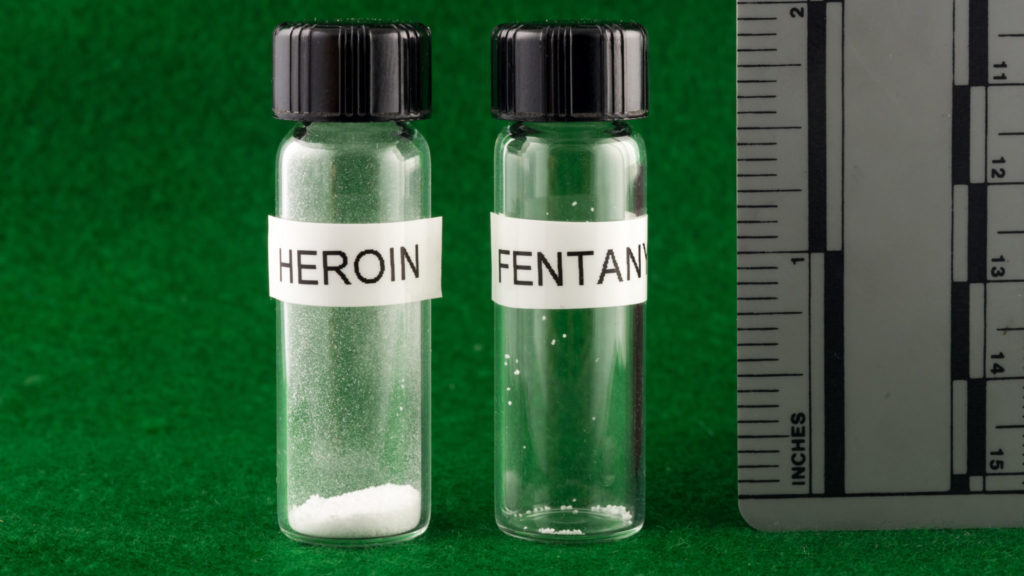
What it is
Fentanyl is a synthetic opioid pain reliever used to treat severe pain, typically cancer related pain. It is part of narcotic analgesic medication classification and works by changing the way the brain and nervous system respond to pain. It is 50 to 100 times more potent than morphine and is prescribed in the form of transdermal patches or lozenges for approved medical use, but is increasingly being used for misuse and abuse in the United States. Recently, cases of fentanyl related overdose and death in the United States is linked to illegally made fentanyl. This is then sold through illegal drug markets for producing an effect similar to heroin and often mixed into heroin or cocaine to increase this euphoric effect.
What it is used for
Fentanyl is used to treat breakthrough pain, which is a sudden increase in pain that occurs despite regular treatment with pain medication. The drug is used with patients at least 18 years old unless they are using Actiq, where the age drops to 16. Fentanyl used in patients who are also taking regular doses of another narcotic pain medication and have become tolerant of said medications.
Legal vs. Illegal
Legal: Fentanyl currently has several accepted medical uses: oral transmucosal lozenges (fentanyl lollipops), buccal tablets (which get dissolved in the mouth rather than swallowed), sublingual tablets (gets absorbed through the lining of the mouth), sublingual sprays (sprayed under the tongue), nasal sprays, transdermal patches, and injectable formulations.
Illegal: Illicitly produced fentanyl is created as a powder or in counterfeit tablets and can either be sold alone or in laced into other drugs such as heroin or cocaine. Illegally used fentanyl is most often associated with recent overdoses is made in labs; this synthetic fentanyl might be sold as a powder, dropped onto blotter paper, put in eye droppers or nasal sprays, or made into pills that look like other prescription opioids.
Symptoms of abuse:
- Dizziness and lightheadedness
- Dry mouth
- Retention of urine
- Suppression of breathing
- Severe constipation
- Itching or hives
- Nausea and vomiting
- Loss of appetite
- Weight loss
- Withdrawal symptoms when ceasing use
- Drug seeking behavior (i.e. doctor shopping)
- Headache
- Difficulty seeing
- Depression
- Hallucinations
- Bad dreams
- Difficulty sleeping
- Sweating
- Shaking
- Swollen extremities
Symptoms of an overdose:
- Drowsiness
- Dizziness
- Confusion
- Slow, shallow breathing
- Limp Body
- Unresponsiveness
- Slow heart rate
- Low blood pressure
- Smaller pupils
- Cold and clammy skin
- Respiratory failure
- Cyanosis (bluish or grayish skin)
How to treat an overdose
Naloxone is an opioid antagonist, usually administered as a nasal spray or injection to someone who overdosed. It works by binding to opioid receptors in the brain and blocking the effects of opioid drugs. Due to fentanyl being stronger and having more severe symptoms, an overdose might require more than one dose of naloxone.
Fentanyl-laced Heroin
As heroin use increased, dealers looked for a way to increase their profits and fentanyl was cheaper for dealers to purchase. Dealers then began to mix fentanyl into their heroin and selling it to buyers under the pretense of being pure heroin. Even just a tiny amount cut into heroin can prove fatal, due to it being 50 to 100 times more potent than morphine. When dealers started mixing unknown amounts of fentanyl into their drugs to increase profits, the overdose rate spiked. The mix of the two drugs creates an intense high which can produce side effects, such as drowsiness, nausea, and confusion.
Fentanyl in Tennessee
Between the years 2016 and 2017, fentanyl use surged 70 percent, which is a dangerous and staggering amount considering one can never know how much of the drug is present in their heroin or cocaine. Last year, Nashville police found a suitcase containing enough fentanyl to make one million lethal doses. Back in July, Police found 24 pounds of fentanyl in a secret compartment of someone’s car in Dickson. Since two milligrams is considered to be a lethal dose, this amount could have been fatal for several million people if it’s pure fentanyl.
Sources:
https://www.narconon.org/drug-abuse/fentanyl-signs-symptoms.html
https://medlineplus.gov/druginfo/meds/a605043.html
https://www.drugabuse.gov/publications/drugfacts/fentanyl

Leave a Reply